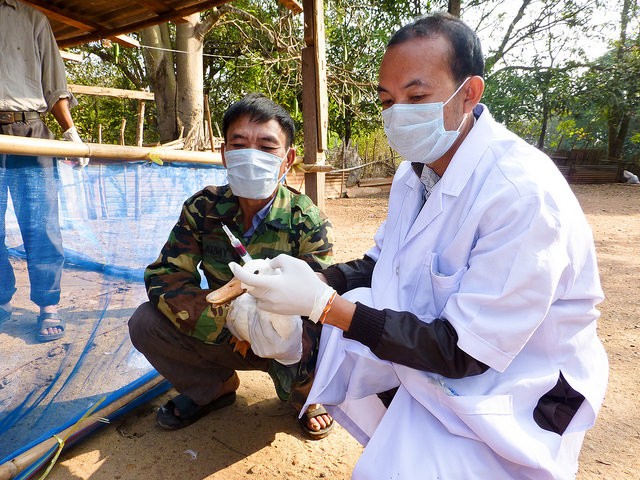Asia Regional
- History
- Our Work
- Lower Mekong Initiative (LMI)
- Newsroom
- Reports and Publications
- Transforming Lives
- Careers
- Partnership Opportunities
- Business Opportunities

Background
Emerging infectious diseases of pandemic potential, such as influenza viruses of animal origin and the Middle East Respiratory Syndrome Coronavirus (MERS-CoV), remain persistent threats to livelihoods, food security and health across Asia and the world. The emergence of avian influenza A/H7N9 in China underscores the dynamic nature of such threats, and the importance of prompt, evidence-based control of emerging diseases at their source in order to mitigate negative regional and global public health impact.
In an effort to aggressively pre-empt and combat such emerging threats before they reach the pandemic stage, USAID works through trans-national platforms and networks that draw upon human, animal and environmental health expertise. These platforms strengthen country and regional diagnostic, surveillance and response capabilities in accordance with the World Health Organization’s International Health Regulations and provide timely and accurate reporting of animal disease to the World Organization for Animal Health.
Program Interventions
USAID program investments are building on a decade of continuous support in the campaign against highly pathogenic avian influenza A/H5N1 and other animal origin influenza viruses. Through its global Emerging Pandemic Threats (EPT) program, USAID is working with host governments, U.S. Government agencies and international partners to build robust systems capable of identifying and mitigating disease emergence risk and detecting and rapidly responding to infectious disease events. Current efforts are strengthening infectious disease prevention, surveillance, laboratory diagnosis and response capacities of governments throughout the region. This support is enabling human and animal health officials to proactively address newly emerging threats, such as the economic and public health burden attributable to increasing rates of antimicrobial resistance. These partnerships, forged with USAID support, are securing stronger, more resilient livestock-based livelihoods and protecting regional and global public health.
Results
-
USAID support is fostering national coalitions across South and Southeast Asia, working to make measurable progress under the Global Health Security Agenda toward a world safe and secure from infectious disease threats.
-
Established with USAID investment, the Southeast Asia One Health University Network is leveraging the collective skills of human, veterinary and environmental health professionals across 104 faculties and 61 universities in four countries to train the future workforce in "One Health" competencies necessary to address emerging disease challenges.
-
Nearly a decade of USAID support to the two-year Regional Field Epidemiology Training Program for Veterinarians (FETPV) has produced 23 graduates who are contributing to disease outbreak investigations and control–and mentoring the next generation of veterinary epidemiologists–in their home countries and across the region. Graduates are working on such pressing public health challenges as approaches to limit influenza A H7N9 transmission in poultry and markets in China and minimize transmission risk to humans.
-
From 2009 to 2014, USAID’s PREDICT project supported enhanced viral diagnostics at 19 laboratories across Asia, contributing to a global effort that produced over 56,000 animal samples and identified 984 viruses. These efforts resulted in a more comprehensive understanding of disease emergence, laying the foundation for targeted prevention measures.
- In partnership with the United Nations Food and Agriculture Organization and the World Health Organization, joint human and animal influenza surveillance platforms are operational across Asia–screening over 50,000 samples in 2015–enabling early detection and control of animal origin influenza viruses that pose a future pandemic threat.







Comment
Make a general inquiry or suggest an improvement.